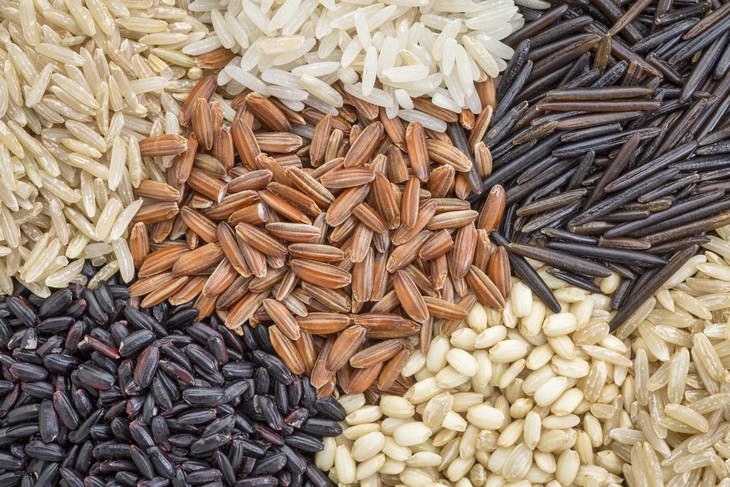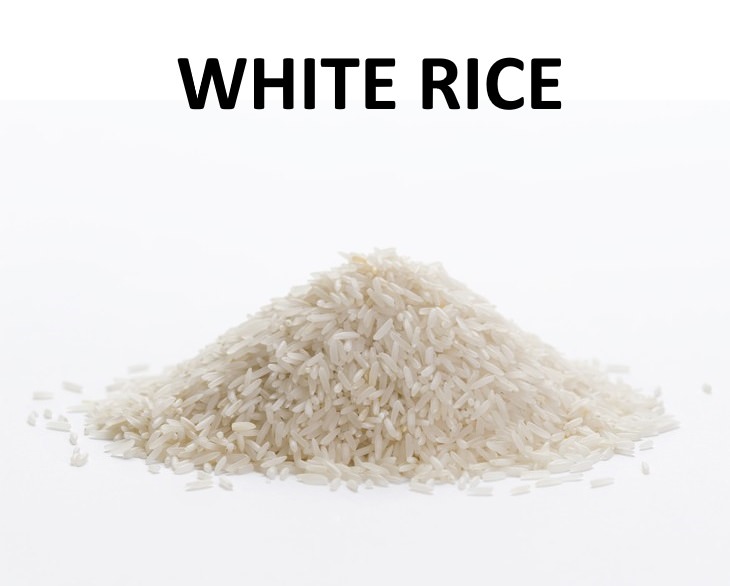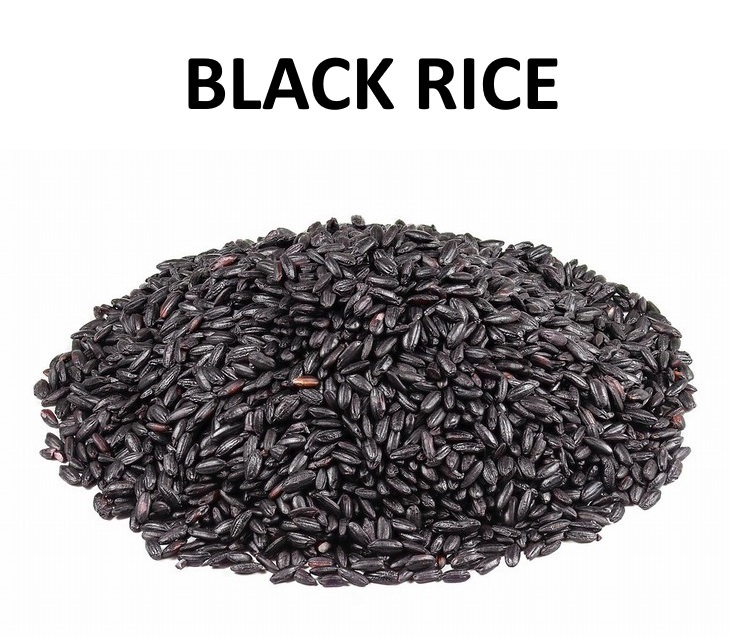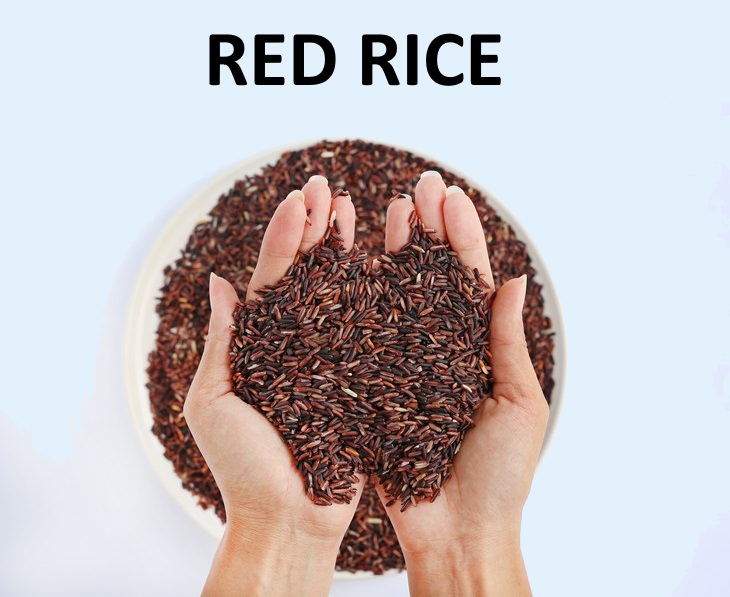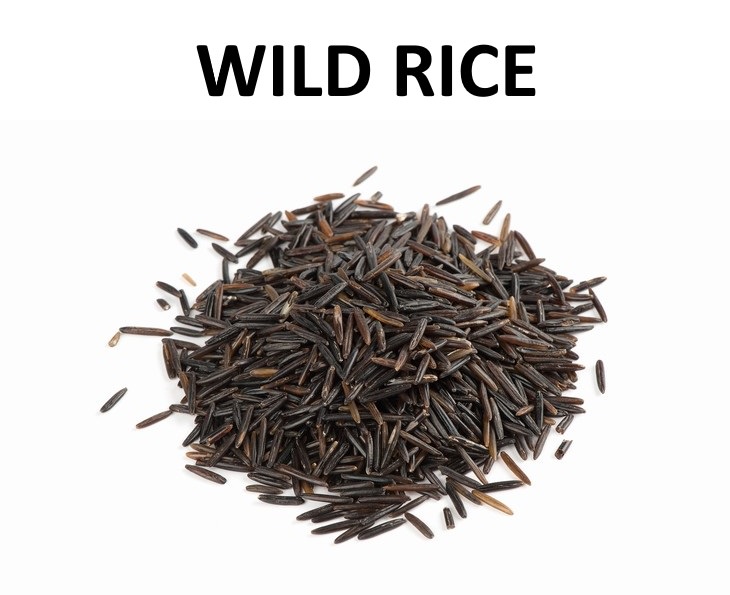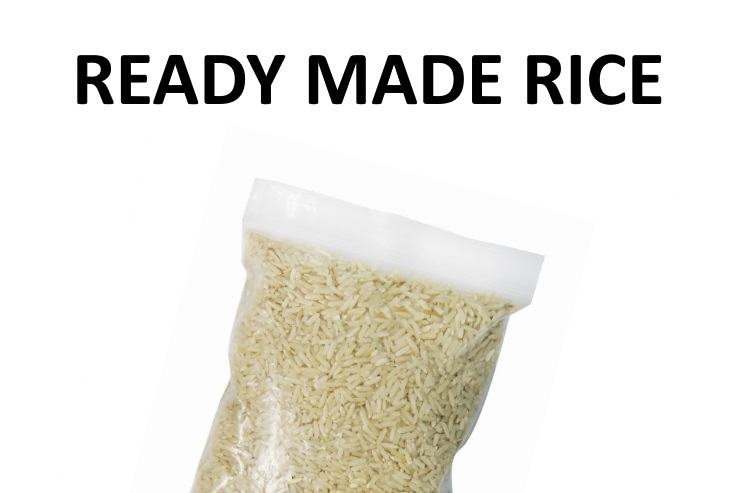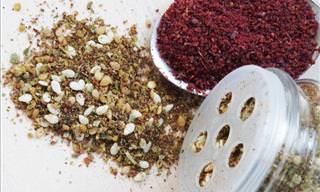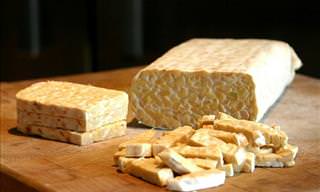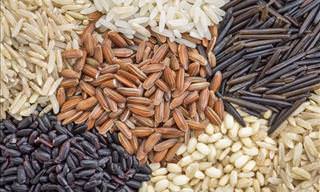1. Brown Rice
We started off this list from a fairly popular kind of rice that you can often find in stores along with white rice: brown rice. Brown rice differs from white rice by being less-processed, as, unlike white rice, it doesn’t have the bran and the germ removed.
This makes it more nutritious compared to white rice, as these parts contain a lot of beneficial nutrients, such as quercetin, luteolin, and apigenin. 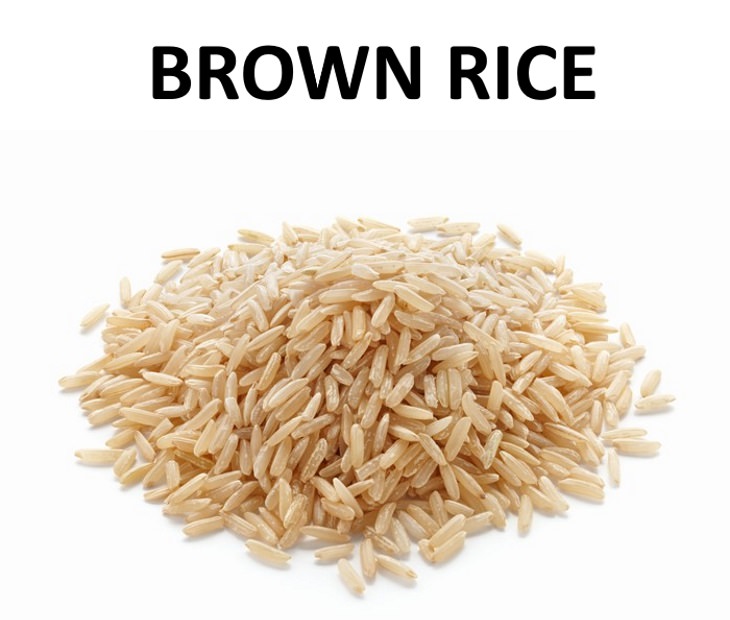
These nutrients can lower the risk of degenerative diseases, like heart disease and some cancers. Apart from that, brown rice contains 3 times more fiber and more protein in comparison with white rice.
This can help you feel fuller longer, as well as help your digestion. Finally, it’s rich in magnesium and can help prevent spikes in blood sugar, which can make it safe and beneficial to diabetes sufferers, as shown in a recent study.
2. White Rice
As we hinted above, white rice is the most purified form of rice, as it has the husk, the bran, and the germ removed during processing. At the same time, it’s the most widely-available rice variety, as the processing extends the shelf life of the product while simultaneously stripping it of many nutrients.
The final product is not only less nutritious, as it contains less fiber, minerals, vitamins, protein and antioxidants, but also less filling. This is why rice is high up on the glycemic list and is not safe for diabetics.
This is not to say that you should completely cut out white rice from your diet, an occasional bowl of white fluffy rice or sushi won’t affect your health, but you do have to keep in mind that eating white rice every day may harm your health.
3. Black Rice
In ancient China, this type of rice used to be a delicacy reserved only for royalty, which is why it also bears the name of forbidden rice. When cooked, the sheer black coloring of the rice changes to a dark purple. There are many kinds of black rice, all of which are the richest in antioxidants in comparison with other rice varieties.
This means that black rice can help fight off the effects of oxidative stress and may deter the progression of age-related degenerative diseases, including but not limited to heart problems, cognitive decline and type 2 diabetes.
Apart from that, black rice is especially rich in anthocyanins, flavonoid plant pigments associated with an array of anti-inflammatory and anti-cancer properties.
4. Red Rice
The so-called red rice varieties, of which there are many, very from a dark brown to a brick color, and, like black rice, they aren’t shy in impressive and beneficial plant compounds.
Red rice combines both the flavonoid antioxidant benefits of black rice, and high protein and fiber counts. Research showed that red rice is better at fighting free radicals and preventing oxidative stress than brown rice.
Like most of these whole-grain varieties, though, red rice is somewhat pricier than white rice and it takes a bit longer to cook that white rice because it is less refined. However, if cost is a concern and you eat rice often, you can mix red or black rice with brown or white rice, that way you will cut down on the cost and have a heartier, healthier meal.
5. Wild Rice
Wild rice is not technically rice, but rather seeds of aquatic grass, but it can be used in most dishes usually prepared with rice, with the exception of foods prepare of sticky rice, such as sushi. Like the whole-grain varieties, wild rice is richer than white rice in protein and fiber, which makes it a better choice for your digestive health and blood sugar.
It has been found that wild rice can lower cholesterol levels and reduce the chances of developing heart disease. Finally, wild rice is an excellent source of B vitamins, magnesium and manganese, all of which are essential for our health and wellbeing.
6. Ready Made Rice
Precooked and prepackaged rice has a bad rep, and rightfully so, as many brands contain too much sodium, added sugars, artificial coloring and preservatives, all of which can affect your health.
This doesn’t mean that all ready-made rice blends are a bad choice, but it is necessary for you to read the label and make sure the product doesn’t have any of the harmful ingredients we mentioned above and doesn’t have too much salt, as it could increase the likelihood of developing heart disease.
The bottom line is that, in the end, your choice depends on your personal preference, but now you know that whole-grain rice varieties are significantly healthier than white rice. Even if you don’t enjoy the taste or find the price point of whole-grain rice not suitable, it may be a good idea to mix them in your white rice for an added antioxidant, protein and fiber boost. You should also keep in mind that consuming a lot of white rice every day may be harmful to your health in the long term.
 Go to BabaMail
Go to BabaMail


